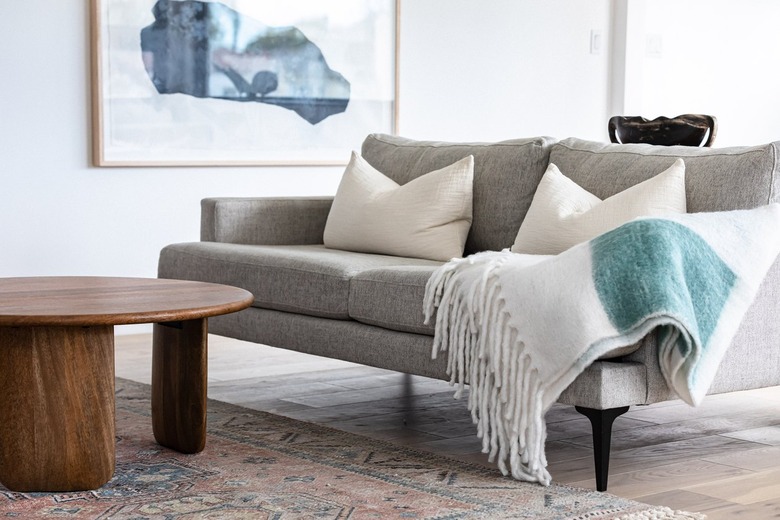How To Direct An HVAC Vent Under A Couch
We may receive a commission on purchases made from links.
It might seem like a great idea to direct your HVAC vent under a couch or your bed to maximize your exposure to hot or cool air. However, doing so can increase your heating and cooling bill and decrease the efficiency of your HVAC system. If you must place furniture in a specific place and that happens to be the same location as a vent, it's better to deflect the vent.
Efficiency and Vent Deflection
Efficiency and Vent Deflection
When an air vent is positioned directly behind or below a piece of furniture, all of the heating or cooling effects will be muted, as the furniture will absorb a significant portion of the temperature. This occurs before the air has a chance to circulate throughout the room. In addition, this will interrupt the force of the air coming out of the vent, resulting in poor circulation
On top of this, having forced air blow near your face on a bed or a couch where you spend a good deal of time is actually bad for your sinuses, as it can be very drying. Still, sometimes there is little choice about where to position furniture except directly in the way of an HVAC vent. This is where a vent deflector comes in. (If you absolutely must direct an HVAC vent under a couch to stay cozy, you can apply this same approach.)
What Are Vent Deflectors?
What Are Vent
Deflectors?
The basic concept of a vent deflector is very simple. You attach a sort of "hood" and/or "chute" to an air vent to direct the airflow away from and around furniture. These deflectors are usually made of clear plastic, and they tend to be fairly inexpensive.
If you have an air vent with a small dial or lever on it, you may already have a kind of vent deflector called an "air register." There is a difference between a straightforward vent and a register. By simply interacting with the control on a register, you will see that it allows you to control the direction of airflow or to even close the vent.
Simply closing the vent is not the best idea since it can cause uneven heating. After all, the overall idea is to improve the airflow and efficiency of your heating and cooling system. You can pair a diverter or deflector with a vent extender to help guide the air out completely from behind and under furniture.
Clear Air Circulation Is Important
Clear Air
Circulation Is Important
Constant and free air circulation is not only energy efficient but also much healthier than stagnant or interrupted airflow. Moving air discourages mold growth and disperses toxic fumes and smoke or grease particles. In addition, dust will gather less in an area with clearly flowing air. Also, the filters in your HVAC system will help to clean many of these undesired elements from the air before adjusting the temperature and pushing it back into the house.
If you notice that you never feel air coming from some vents and that those vents accumulate dust much quicker than others, those are "return" vents. These are very important components of your HVAC system, and you should not use a diverter in the ductwork beneath a register. It could create a significant issue.
Instead of using a diverter, you can elect to open or close some of the dampers on your ductwork near the furnace. These control larger sections of your ductwork and have been professionally installed as part of the system.
References
- Aria: Air Vent Cover vs. Air Register
- Sobieski Services, Inc.: Vent Deflectors and Ways to Get Around Closing Your Vents
- Aireserv Heating & Air Conditioning: What Is an Air Vent Diverter?
- Deflecto: Under Furniture Air Deflector
- Boulden Brothers: Why You Should Leave Vents and Registers Open
- LifeSavvy: House too Hot or Cold? Adjust Your HVAC Dampers for Year-Round Comfort
